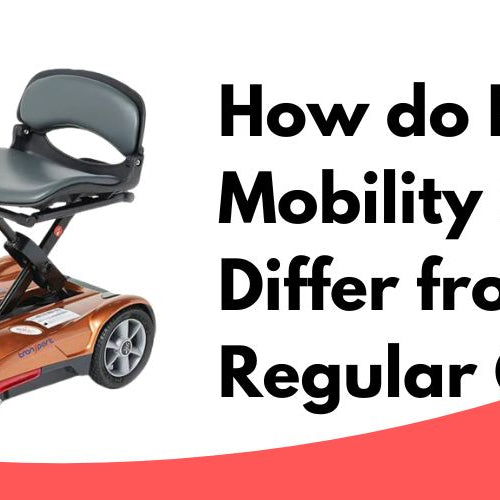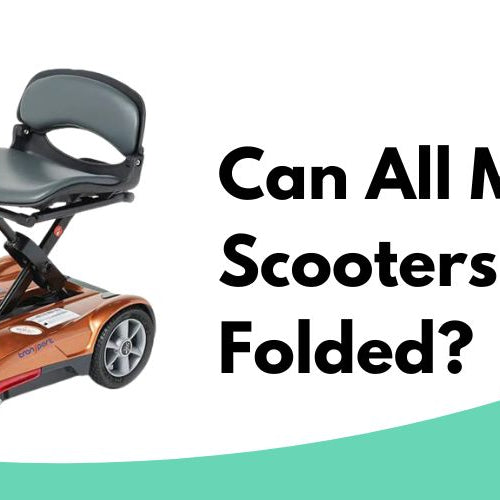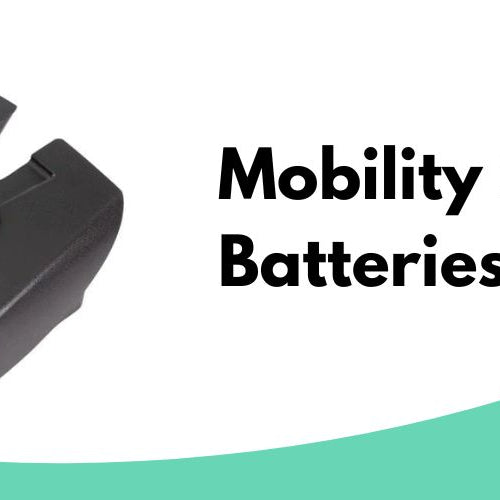Rollators (Also known as walkers) and canes are both popular mobility devices that help people maintain their independence and mobility. Deciding on which of these devices is most suitable largely depends on an individual's needs and preferences. With rollators and canes each offering unique benefits and features, it's essential to understand their differences before making a decision.
A cane is often the first choice for those experiencing moderate mobility challenges. As a lightweight, simple, and affordable option, canes offer basic support and balance assistance. They are ideal for those who need slight support during short trips or moving about in their homes. On the other hand, rollators are wheeled walkers that offer greater stability and convenience for individuals with more severe mobility challenges. Equipped with three or four wheels, an in-built seat, and handlebars, rollators provide an opportunity for users to rest and additional support while on the move. Their versatile design allows for easy maneuvering on various surfaces, and adjustable heights cater to different users' needs.
Understanding the unique features and functions of both canes and rollators is crucial in determining which mobility device is right for you or your loved one. Factors to consider include individual mobility requirements, physical ability, and the specific environment where the device will be commonly used. Overall, recognizing your needs and preferences will guide you in making an informed decision to enhance mobility and independence.
Rollators Vs. Canes
Rollator Features
Rollators are mobility aids that offer a higher level of support compared to canes. They typically come with four wheels, making them easy to maneuver both indoors and outdoors. Large wheels provide a smoother and more comfortable experience when traversing outdoor terrain. Some of the key features of rollators include:
- Adjustable height handles: This ensures a comfortable fit for the user, accommodating various heights and postures.
- Ergonomic hand brakes: Hand brakes provide added safety and control while using the rollator.
- Foldable design: Many rollators fold easily for storage or transportation.
- Built-in seat: Rollators often have a comfortable seat that allows the user to rest when needed.
Purchase a wide range of walkers at Mobility Nest today!
Cane Features
Canes, on the other hand, are simpler walking aids that provide minimal support for those with minor balance or mobility issues. They are a more suitable option for short distances and crowded places. Some of the key features of canes include:
- Lightweight design: Canes are usually lightweight, making them easy to carry and maneuver.
- Adjustable height: Like rollators, canes can be adjusted to accommodate different heights.
- Various grip options: Canes are available with a variety of handle designs, such as T-handle or ergonomic grip, for user comfort.
Typically, canes are recommended for individuals with mobility issues due to weakness or pain on one side of the body, while rollators are better suited for those who need more support and stability while walking. That said, it's essential to consult with a healthcare professional when deciding which mobility aid is right for you.
Benefits of Rollators
Stability and Support
Rollators provide improved stability and support compared to canes, making them an effective aid for preventing falls for those with mobility issues. They are equipped with three or four wheels, allowing users to walk while receiving extra support from the padded hand grips. Furthermore, unlike canes, rollators don't require as much physical strength to use since the frame does not need to be lifted.
Comfort
One of the most attractive features of rollators is their built-in seat, allowing users to conveniently sit down and rest whenever needed. Many rollators are also designed with larger rubberized wheels or casters, which make traversing outdoors more comfortable. The adjustable-height handlebars enable users to find the optimal position for their comfort and posture, which is essential for long-term use.
Mobility
Rollators not only provide better stability and support than canes, but they also promote increased mobility on various surfaces. The wheeled design helps users move with increased ease compared to a traditional walking frame, enhancing independence and overall quality of life. Additionally, rollators can be equipped with various accessories, such as baskets and trays, to improve convenience during daily activities.
- Improved stability and support
- Built-in seat for resting
- Adjustable-height handlebars for comfort
- Enhanced mobility on different surfaces
- Accessory attachments available
Benefits of Canes
Portability
Canes offer a great deal of portability compared to other mobility aids. They are lightweight and easy to carry, making them a convenient option for individuals who have mild mobility challenges. The compact design of canes allows users to move around with ease and store them in small spaces when not in use, like in the trunk of a car or on public transportation.
Cost and Affordability
Another attractive feature of canes is their cost-effectiveness. Many canes are available at an affordable price point, making them accessible to a wider range of individuals in need of assistance. Further options, like standard canes and T-canes, come in various styles and materials to cater to different budget levels. To provide perspective, a basic cane can be purchased at a significantly lower cost than a rollator.
Simplicity
The simplicity of canes sets them apart from other mobility aids, as they feature a single shaft and one-point base. Canes provide a third point of contact with the ground, which enhances stability and balance for users. Most canes are easy to use and don't require much maintenance, so they are an excellent option for those who prefer a fuss-free approach to mobility support.
Canes are also known to help with pain reduction, especially in individuals suffering from knee osteoarthritis. Studies have shown that consistent cane use can lead to decreased pain and improved walking motion. In summary, canes offer portability, affordability, and simplicity, making them an ideal choice for people with mild mobility issues.
Factors to Consider
User Needs and Abilities
When deciding between a rollator and a cane, it's crucial to consider the user's individual needs and abilities. Canes offer basic support and balance for users who are able to carry most of their weight independently. They are often recommended for people with minor mobility issues or who only need assistance on one side.
In contrast, rollators offer more stability and support with their wheeled frames, allowing users to move with more confidence. Rollators also frequently include features such as in-built seats, handlebars, and storage options. These devices are well-suited for users with advanced mobility issues or those who require additional support and assistance in maintaining an upright and stable walking posture.
Indoor and Outdoor Use
Both canes and rollators may be used indoors or outdoors, but their respective designs impact their effectiveness in different environments. Canes are typically more maneuverable in tight spaces, making them ideal for indoor use. However, they can provide less stability on uneven surfaces outdoors.
Rollators, with their larger, wheeled frames, offer a smoother experience when traversing outdoor terrain. Larger wheels can make it easier to navigate obstacles such as curbs or uneven ground, while hand brakes provide additional control and safety. However, rollators may prove more cumbersome in confined indoor spaces or narrow hallways.
Storage and Transport
When considering storage and transportation needs, it's essential to evaluate the device's size and portability. Canes are generally lighter and more compact, making them relatively easy to store and transport. They can fit in most car trunks, closets, or smaller spaces without difficulty.
On the other hand, rollators tend to be bulkier and may require extra space for storage and transport. While some models can be folded to save space, their larger frames and additional features often result in increased size and weight. As a result, users should ensure they are able to comfortably accommodate and manage a rollator's bulkier size before making a decision.
By carefully considering the user's specific needs and abilities, as well as the environments in which the mobility aid will be used, one can make an informed decision between a rollator and a cane.
Conclusion
In determining whether a rollator is better than a cane, it is essential to consider the individual's specific needs, preferences, and level of mobility. Rollators and canes offer unique advantages that cater to different situations and requirements.
A rollator is more suitable for individuals who need additional support and balance due to its stable frame and four wheels. It also provides a seat for resting and storage compartments for convenience. On the other hand, a cane provides minimal support and is better suited for those with adequate muscle strength and balance.
-
Pros of Rollators:
- Greater support and stability
- Seat for resting
- Storage compartments
- Adjustable handle height
- Braking system for safety
-
Pros of Canes:
- Lightweight and portable
- Less expensive compared to rollators
- Provides basic support and balance
- Can be adjusted for height
- Available in various styles and materials
In some cases, individuals may choose to use both a rollator and a cane depending on their needs and activities. When making a decision, it is essential to consult with a healthcare professional to assess the person's mobility needs and determine the most appropriate device.
Ultimately, the choice between a rollator and a cane should be based on the individual's specific circumstances, goals, and personal preferences. By carefully considering these factors, one can select the best mobility aid to enhance their quality of life and maintain independence.






Leave a comment